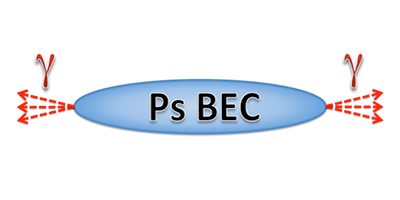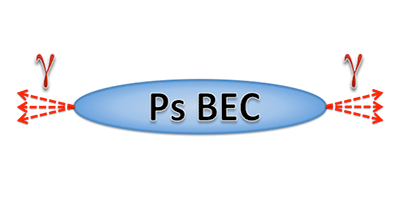Bose-Einstein Condensates for Gamma-Ray Lasers
Gamma-ray lasers could have a number of important applications, from high-resolution imaging to new ways to probe or control nuclear transitions. But building such lasers is still impossible because of the lack of suitable amplification media and mirrors. As reported in Physical Review Letters, Hamlet Avetissian and colleagues at the Yerevan State University in Armenia have theoretically investigated a gamma-ray laser based on a Bose-Einstein condensate (BEC) of positronium—hydrogenlike atoms made of an electron and a positron. Their analysis suggests that such a laser could be easier to build than previously thought, since it could be based on a single-pass scheme that does not rely on gamma-ray mirrors. Although physicists have yet to make a positronium BEC, recent advances in the manipulation of the short-lived particles suggest the authors’ theory might soon be tested.
In the positronium-BEC laser, first theorized at Bell Labs in 1993, annihilations of electron-positron pairs are stimulated by photons of the same energy ( mega-electron-volts); annihilation thus plays the role of electronic transitions in a regular laser. Previous theoretical papers have investigated classical laser schemes, with the BEC gain medium placed between two mirrors. But the new work of Avetissian and colleagues shows that a simpler scheme could be possible: under certain parameter combinations, a very efficient cascade of annihilations, triggered by spontaneous emission, could determine lasing in one pass. This efficient process is enabled by an instability arising thanks to the simultaneous coherence of the BEC and the photon beam. The authors suggest that such “double coherence” may be exploited as a general lasing mechanism for BECs based on other atoms or quasiparticles. — Matteo Rini





